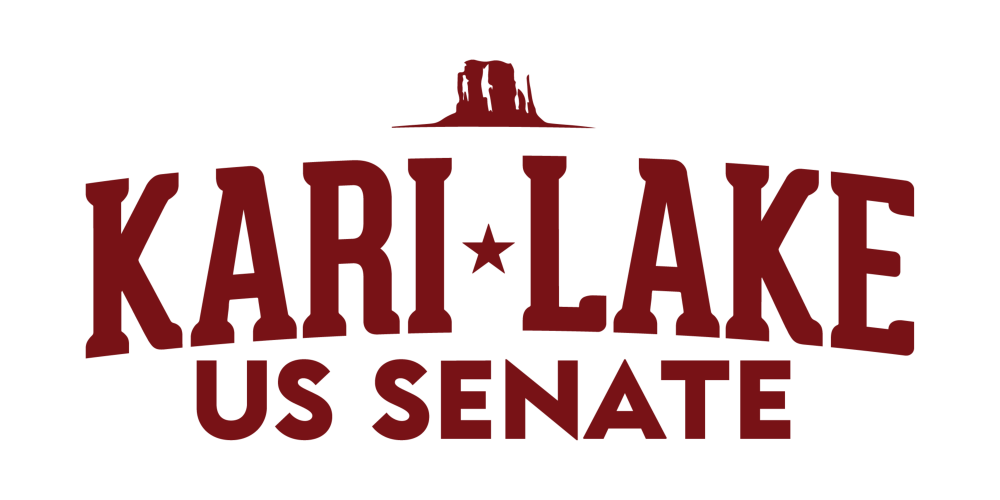|
|
|
Kari Lake’s NEW Op-Ed & Video: Delivering Water to The West
Key Excerpts:
- Seven states, 30 federally recognized tribal nations and Mexico depend on the Colorado River for drinking water, agriculture and industry — and to support our natural riparian environments…more people now live in the Colorado River Basin than the river can support.
- Instead of pursuing a long-term solution, Washington is using federal funds to pay states and tribal nations to leave water in the river instead of taking their full allocation. Mostly, that means paying farmers to stop farming. That is not a viable long-term solution, and strategically, we need to be encouraging MORE local farming and food production, not less.
- We need an approach to the Colorado River that combines near-term conservation, water-use efficiency improvements and storage capacity enhancements with a long-term strategy to deliver a reliable, sustainable source of new water to the West.
- In the near term, that means increasing storage capacity by expanding existing reservoirs and adding new ones in the Upper Colorado River Basin along various tributaries and other rivers throughout the Southwestern United States. We also need to line and cover canals to reduce evaporation water loss, develop stormwater capture systems in major urban areas and expand our use of brown and gray water recycling.
- We need to secure a new source or, more likely, multiple sources of fresh water. There are several ways we can do this, and we need to explore all of them. First is alluvial reclamation. There is a significant amount of water deep underground throughout large parts of Arizona and other Western states that could be tapped.
- Desalination plants could easily be built along the coastlines of both Mexico and California, and the water would not need to be piped long distances overland; it could simply be exchanged for all or a portion of the current allocations both receive from the Colorado River.
- In the end, that might not be enough, and we might need to build a large-scale system of water transfer pipelines, but that is not an impossible barrier, either. We know how to build desalination at scale, and we know how to move large volumes of liquid around via pipelines. These are not experimental or unproven technologies. The Gulf of California is only 50 miles from Yuma, and the Pacific Ocean is less than 150 miles away.
- For many years, Arizona Senator Jon Kyl led the efforts to secure the water future of both our state and the West as a whole. Since his retirement, we have needed that dynamic, focused leadership on Western water issues. It is a role that needs to be filled immediately, with a person of vision, and one I am fully ready to embrace. As the next senator for Arizona, I will make it a priority to preserve and expand water to the West.
- Seven states, 30 federally recognized tribal nations and Mexico depend on the Colorado River for drinking water, agriculture and industry — and to support our natural riparian environments…more people now live in the Colorado River Basin than the river can support.
- Instead of pursuing a long-term solution, Washington is using federal funds to pay states and tribal nations to leave water in the river instead of taking their full allocation. Mostly, that means paying farmers to stop farming. That is not a viable long-term solution, and strategically, we need to be encouraging MORE local farming and food production, not less.
- We need an approach to the Colorado River that combines near-term conservation, water-use efficiency improvements and storage capacity enhancements with a long-term strategy to deliver a reliable, sustainable source of new water to the West.
- In the near term, that means increasing storage capacity by expanding existing reservoirs and adding new ones in the Upper Colorado River Basin along various tributaries and other rivers throughout the Southwestern United States. We also need to line and cover canals to reduce evaporation water loss, develop stormwater capture systems in major urban areas and expand our use of brown and gray water recycling.
- We need to secure a new source or, more likely, multiple sources of fresh water. There are several ways we can do this, and we need to explore all of them. First is alluvial reclamation. There is a significant amount of water deep underground throughout large parts of Arizona and other Western states that could be tapped.
- Desalination plants could easily be built along the coastlines of both Mexico and California, and the water would not need to be piped long distances overland; it could simply be exchanged for all or a portion of the current allocations both receive from the Colorado River.
- In the end, that might not be enough, and we might need to build a large-scale system of water transfer pipelines, but that is not an impossible barrier, either. We know how to build desalination at scale, and we know how to move large volumes of liquid around via pipelines. These are not experimental or unproven technologies. The Gulf of California is only 50 miles from Yuma, and the Pacific Ocean is less than 150 miles away.
- For many years, Arizona Senator Jon Kyl led the efforts to secure the water future of both our state and the West as a whole. Since his retirement, we have needed that dynamic, focused leadership on Western water issues. It is a role that needs to be filled immediately, with a person of vision, and one I am fully ready to embrace. As the next senator for Arizona, I will make it a priority to preserve and expand water to the West.
Are you looking for a shipping solution? Maybe you need to change freight carriers? Find out what the hard working and reliable people at Team Worldwide can do over land, sea and air

